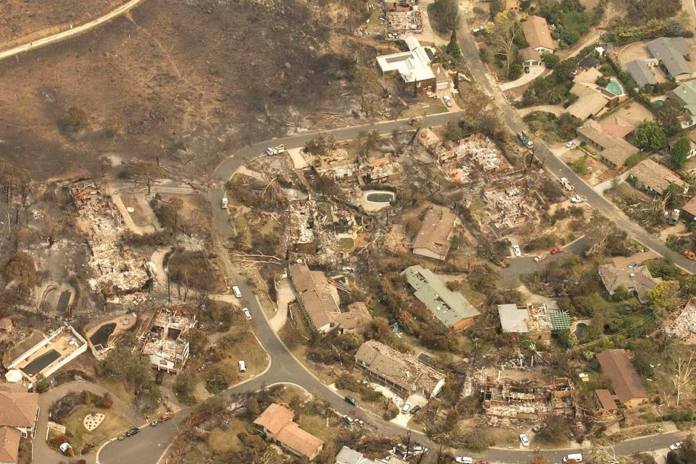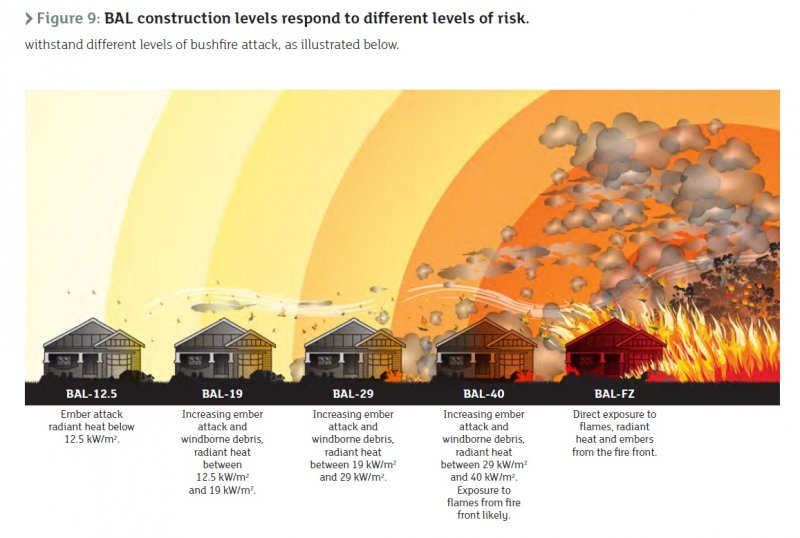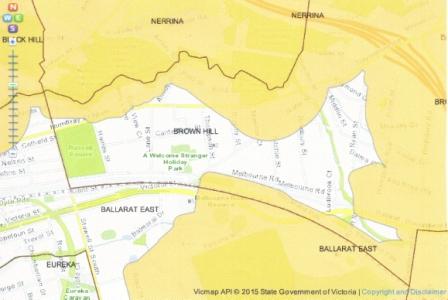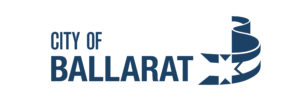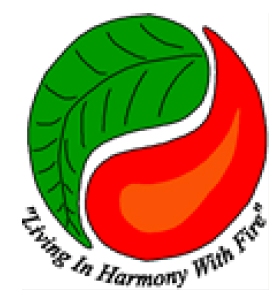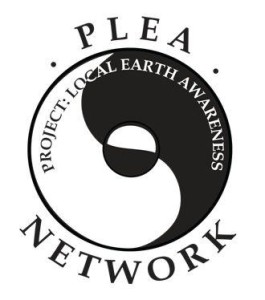What you will find on this page: what is the network; Seasonal Bushfire Outlook for 2024/2025; network purpose; disclaimer; clusters formed for each fire season; information session details; contacts for more information; community support for network. (links in blue)
For more information access other FireAware Network pages: Neighbourhood clusters; Understanding risk; Be prepared; Role of council & emergency services; Resources
Brown Hill Community FireAware Network
Did you know that Brown Hill is in a Bushfire Prone Area?
Latest News End Latest News
‘It’s time to give up on normal’: what winter’s weird weather means for the warm months ahead
2 September 2024, The Conversation: ‘It’s time to give up on normal’: what winter’s weird weather means for the warm months ahead. Heavy winds struck south-east Australia over the weekend as a series of cold fronts moved across the continent. It followed a high fire danger in Sydney and other parts of New South Wales last week, and a fire in south-west Sydney that threatened homes. The severe weather rounds out a weird winter across Australia. The nation’s hottest ever winter temperature was recorded when Yampi Sound in Western Australia reached 41.6C on Tuesday. Elsewhere across Australia, winter temperatures have been way above average. We can look to the positives: spring flowers are blooming early, and people have donned t-shirts and hit the beach. But there’s a frightening undercurrent to this weather. 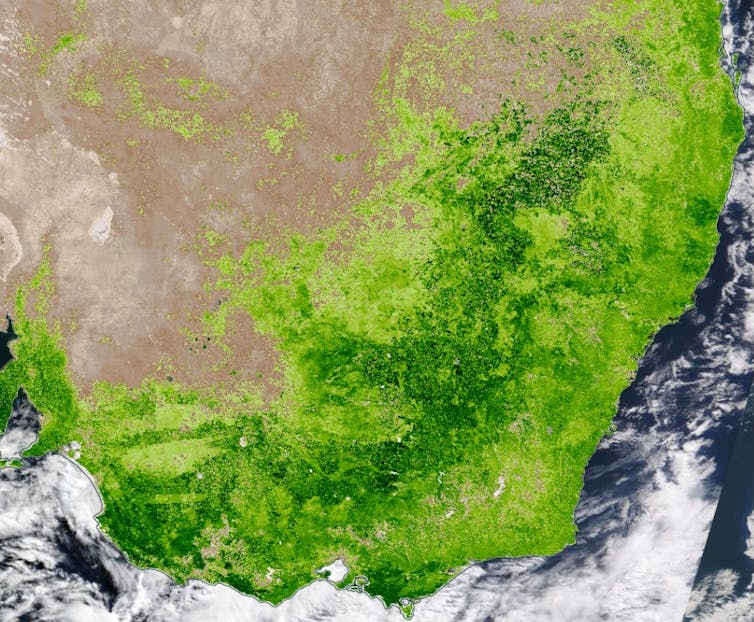 Earth’s climate has become dangerously unstable, and it’s only a matter of time before we get the bad combination of hot and dry weather, strong winds and a spark. None of this should come as a surprise. The sooner we stop expecting Australia’s weather to be “normal”, the sooner we can prepare for life in a wild climate. The green is deceiving The landscape around Sydney – and in fact, across much of south-east Australia – is very green at the moment. That’s because we’ve had a couple of years of good rains which trigg
Earth’s climate has become dangerously unstable, and it’s only a matter of time before we get the bad combination of hot and dry weather, strong winds and a spark. None of this should come as a surprise. The sooner we stop expecting Australia’s weather to be “normal”, the sooner we can prepare for life in a wild climate. The green is deceiving The landscape around Sydney – and in fact, across much of south-east Australia – is very green at the moment. That’s because we’ve had a couple of years of good rains which trigg
ered an explosion of vegetation growth. The below NASA satellite image reveals the picture in stark detail. It’s certainly lush out there at the moment.
But the problem with climate change is that weather conditions can turn on a dime. This August was a case in point. At month’s end, much of Australia was hit by a record-breaking heatwave and damaging winds – conditions that can dry out a green landscape with devastating efficiency, turning it into fuel for a bushfire. The dangerous fire weather that struck Sydney this week came as a surprise to many. But in reality, these abnormal conditions are the new normal. We must open our minds to this, if we want to be prepared. Read more here
Improving mobile phone reception for Brown Hill residents northside – GOOD NEWS!
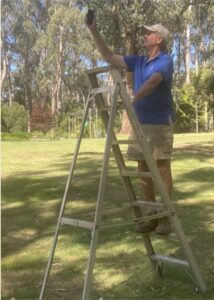 MARCH 2023: Many Brown Hill residents northside, especially those who live in the area around Springs Rd have reported poor, intermittent or non-existent mobile phone coverage for many years. As this is an area of high bushfire risk, Brown Hill Bushfire Network believe a strong and consistent mobile phone coverage should be seen as an essential communication tool during emergency events.
MARCH 2023: Many Brown Hill residents northside, especially those who live in the area around Springs Rd have reported poor, intermittent or non-existent mobile phone coverage for many years. As this is an area of high bushfire risk, Brown Hill Bushfire Network believe a strong and consistent mobile phone coverage should be seen as an essential communication tool during emergency events.
One of our Cluster Contacts, Jeff Dobell, put together a survey of residents in the affected area in 2020. At the close of the survey 168 responses had been received. This was a great response when it was estimated there were around 350-450 houses in the designated area. Many thanks to all the residents that took part in the survey. The responses supported our concerns that phone reception was poor to non-existent in a significant proportion of the area.
And now to the good news! An exciting development towards improving mobile phone reception in northside Brown Hill maybe one step closer. A resident in Hill View Road, has received a letter advising that Telstra is proposing to build a mobile phone tower on Central Highlands Water land facing Gong Gong Rd, Brown Hill. This is a high point overlooking the Springs Road valley and surrounds. Jeff is also aware that Optus is similarly exploring sites in the same area for a phone tower. Let’s hope that all will be installed well before they are needed!
The letter states: Notification of Planning Permit Application. Proposed Telecommunications Facility at 265 Daylesford Rd, Gong Gong…The antennas will provide Telstra 4G/5G telecommunications to the area; funding through Connecting Victoria Program.
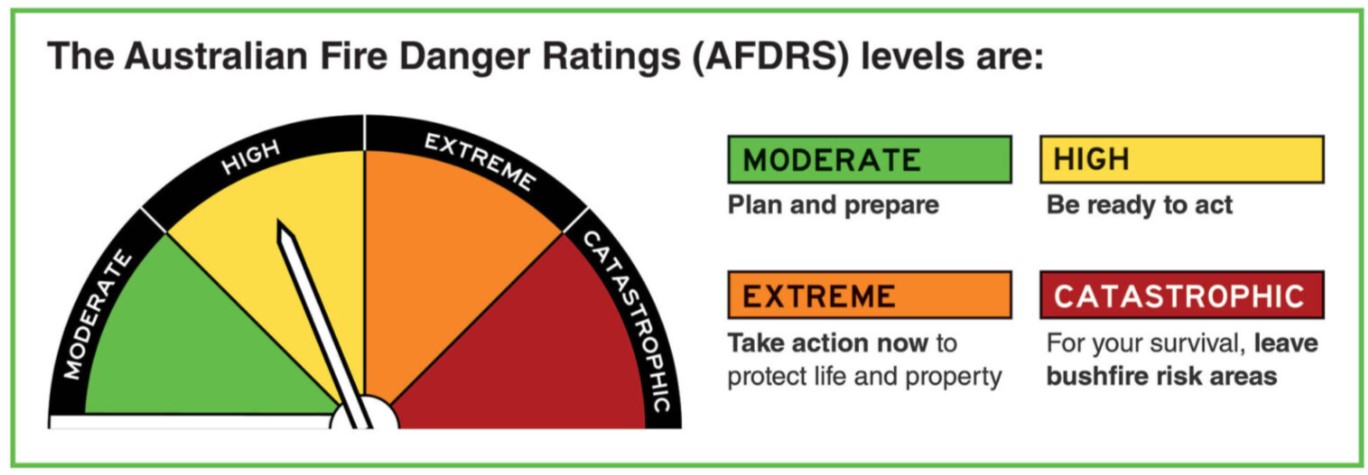
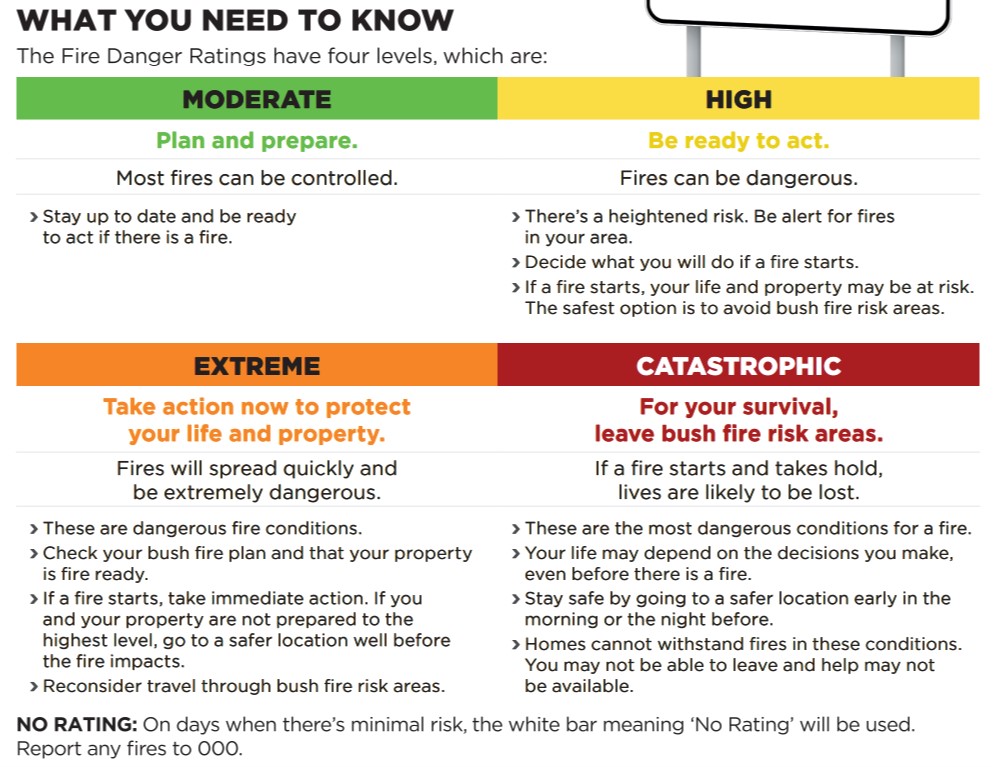
Victorians could see an increased number of fires leading into summer.
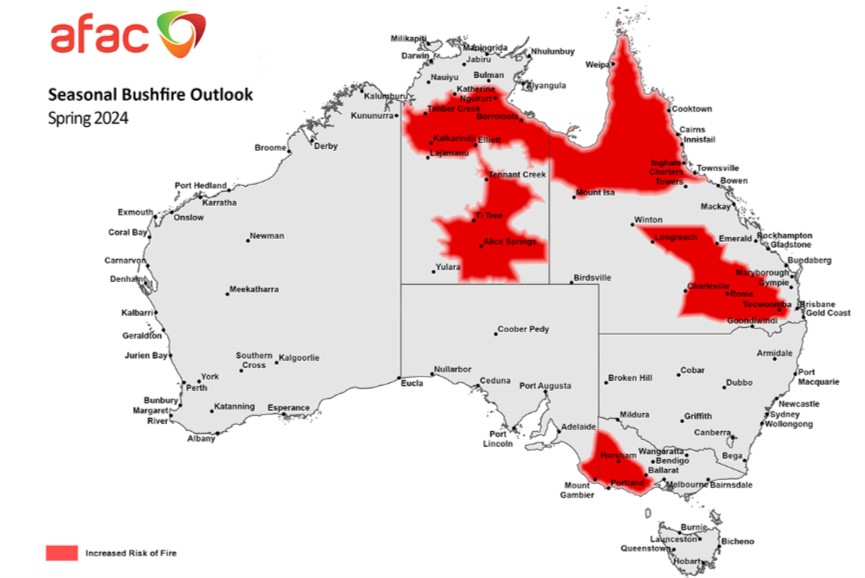 Victorians can expect a drier and warmer spring, with a high chance of an early start to the fire season in the central, western and northern parts of the state.Victoria’s drier than average conditions are expected to continue, following below average rainfall across much of the state during winter, according to the Australian Seasonal Bushfire Outlook for Spring, released today Despite below average rainfalls for winter, grass growth is expected to be higher than usual following three years of wet La Niña conditions.A strong drying trend in far east and central Gippsland has resulted in higher-than-normal potential for fires, including communities close to bushland, especially where vegetation was unburnt during the 2019-20 fires.
Victorians can expect a drier and warmer spring, with a high chance of an early start to the fire season in the central, western and northern parts of the state.Victoria’s drier than average conditions are expected to continue, following below average rainfall across much of the state during winter, according to the Australian Seasonal Bushfire Outlook for Spring, released today Despite below average rainfalls for winter, grass growth is expected to be higher than usual following three years of wet La Niña conditions.A strong drying trend in far east and central Gippsland has resulted in higher-than-normal potential for fires, including communities close to bushland, especially where vegetation was unburnt during the 2019-20 fires.
There is also a high likelihood that bushfire season will start earlier, compared to the past two years, across much of central, western and northern Victoria. Remaining parts of the state are expected to see normal fire potential. However, hot, windy conditions can still pose a fire risk.
.
Have you ever been in a bushfire ember storm?
Click on the image below taken by ABC News of the Sunshine Coast bushfire ember attack during height of firestorm, early September 2019.
Fire invading the suburbs of Canberra 2003
Bushfire Attack Levels (BAL) for buildings in Fire Prone Areas
What are Bushfire Prone Areas? Bushfire Prone Areas are areas that are subject to or likely to be subject to bushfires. To view the Bushfire Prone Area of Brown Hill access the link here. Source: Visualising Ballarat.
Bushfire protection and my property: This is the main Vic DELWP site You can get your own property report from this page in regard to planning overlays. A Guide to retrofit your home for better protection from a bushfire:This guide, among other things provides a simple table that outlines low /moderate and high cost alternatives and sets out different requirements for the BAL ratings. Access guide here: A-guide-to-Retrofit-Your-Home-for-Better-Protection-from-a-Bushfire_2014 (1)
A Guide to Windows and Doors in Bushfire Prone Areas: Another more detailed guide for windows and doors. FAQs – Bushfire Prone Planning – BAL Assessments. Even though this site relates to WA I found the information provided quite useful. Contact City of Ballarat for more specific details on 5320 5500
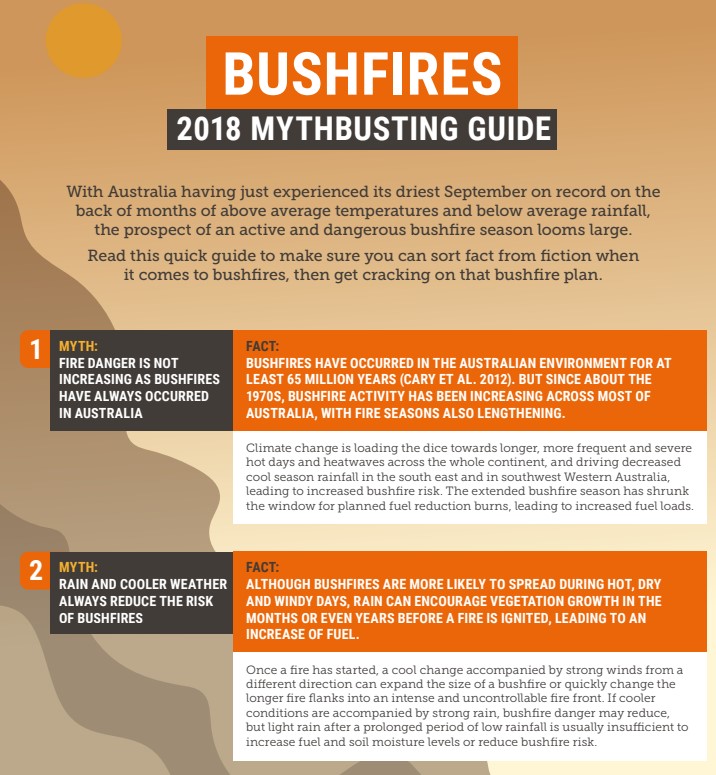
FOR MORE BUSHFIRE MYTHS ACCESS THIS PDF FROM CLIMATE COUNCIL: Bushfire-Mythbusting 2
Also refer to the following FireAware Network pages:
- FireAware Network – clusters (providing specific details for each cluster locality):
- FireAware Network – understanding risk of a fire event
- FireAware Network – be prepared
- FireAware Network – role of emergency services in a fire event
- FireAware Network – resources (providing a range of further information – videos; articles; reports)
What is the Brown Hill Community FireAware Network?
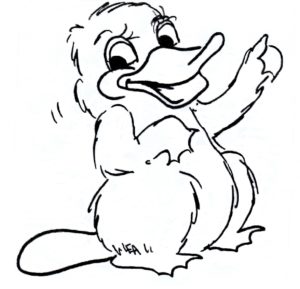 The network consists of “walkable” Neighbourhood Clusters, spread across the suburb of Brown Hill – a priority being the households/streets on the urban-rural interface of Brown Hill along the Yarrowee River and the growing number of subdivisions of Brown Hill north of the freeway, all located within the designated Bushfire Prone Area.
The network consists of “walkable” Neighbourhood Clusters, spread across the suburb of Brown Hill – a priority being the households/streets on the urban-rural interface of Brown Hill along the Yarrowee River and the growing number of subdivisions of Brown Hill north of the freeway, all located within the designated Bushfire Prone Area.
(Penny Platypus is the mascot for the Network – learn more about Penny here)
What is the purpose of a cluster?
- to provide a yearly reminder of the need to prepare for the fire season;
- to present in a variety of ways information that is relevant to a specific neighbourhood;
- to highlight that it is everyone’s responsibility to be aware and prepared to act in a fire event impacting on their community or a community nearby;
- to encourage in households the “habit” of preparation
Disclaimer
Please note the information provided through the information sessions and web pages is not for the purpose of giving specific advice. The information is offered in good faith for those wishing to know more about the potential risk to their community and wanting to take responsibility for their own informed decisions. The information and material offered is freely available from a number of sources, primarily fire/emergency services sites such as CFA and other State emergency services and research institutions.
Clusters for the 2024/2025 fire season
There are ten neighbourhood clusters for the pre-fire season of 2024/2025. Access more details here
Five north of the freeway
- Ditchfield/Benson (approx 60 households)
- Coorabin Estate (approx. 110 households)
- Janson Rd & Stringybark Dr (approx. 150 households)
- Orchard Lane (approx. 90 households)
- Aplle Orchard Estate (approx. 100 households)
Four south of the freeway
- Mancev Crt (approx. 25 households)
- Russell Sq & Lane St (approx. 260 households)
- Finlay St Sth & Bradbury St (approx 100 households)
- Dalma/ Ryan St (approx. 55 households)
- Finlay St North (approx. 50 households)
Information sessions available through clusters
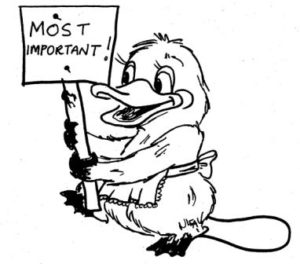 Clusters offer information sessions, as requested, to their cluster residents specifically tailored to their location:
Clusters offer information sessions, as requested, to their cluster residents specifically tailored to their location:
Sessions can cover a range of topics, for example:
Presentation of the risk of a fire event impacting on the community of Brown Hill and in particular the neighbourhood cluster location involved:
- Myths relating to fire and household safety;
- Reality of urban fire risk highlighting ember attacks – varying intensity & duration;
- Overview of Brown Hill community risk;
- Specific risks to the cluster location;
- What it is like to be near a bushfire
Preparing household and property prior to the fire season:
- Fire weather awareness – Fire Danger Ratings;
- Review of high and low risk within the cluster (direct and indirect impact);
- Overview of preparation required for both levels;
- Basics for pre-season property preparation;
- Basics for household bushfire plans
Wanting more information about the Network?
NETWORK CONTACT: Hazen – hmc433@hotmail.com
CLUSTER CONTACTS details access here
What community support is there for the Network?
The following have offered their support to the Network in a variety of ways as a means to help raise the awareness of residents of Brown Hill of the bushfire risk to the urban interface and assist them in preparing for such an event:
Brown Hill Progress Association
Country Fire Authority (Ballarat local office)
City of Ballarat
 Central Highlands Water
Central Highlands Water
Dr Kevin Tolhurst (Tolhurst Bushfire Services)
In 2015 Kevin was made a Member of the Order of Australia (AM) for his significant service to science through land and bushfire management, and to the community through providing expert advice at fire emergencies. He works and lives in Creswick and therefore has a wealth of knowledge of our local area.
With much sadness we heard of Kevin’s sudden death on the 5 October 2023. Kevin’s contribution to forest and fire management has been phenomenal. His knowledge and passion were truly awe-inspiring. One of hos colleagues, Fire Management Victoria chief fire officer Chris Hardman said on Kevin’s passing, ““Kevin is one of the architects of reshaping bushfire modelling in Victoria. One of his real superpowers as a highly regarded academic was his ability to take complex scientific messaging and make it so regular people could understand it.” In forming the Brown Hill FireAware Network, I was one of the beneficiaries of his “superpowers”. He will be sorely missed. Hazen.
Gary Morgan AM AFSM; Principal Consultant; Global Wildland Fire Management Services
Gary Morgan former Bushfire CRC CEO was recognised for his significant service to the community with an Australia Day honour in 2018, Becoming a member of the Order of Australia (AM). Gary was awarded this honour for his significant service to the community through emergency response organisations, and to forest and fire research and management. He has spent more than 20 years in senior land and fire management roles. As Victoria’s Chief Fire Officer for public lands, for nine years, he was responsible for the management and deployment of fire suppression personnel. He became the CEO of the Bushfire CRC in mid-2007. He is a long time resident f Ballarat.
PLEA Network


